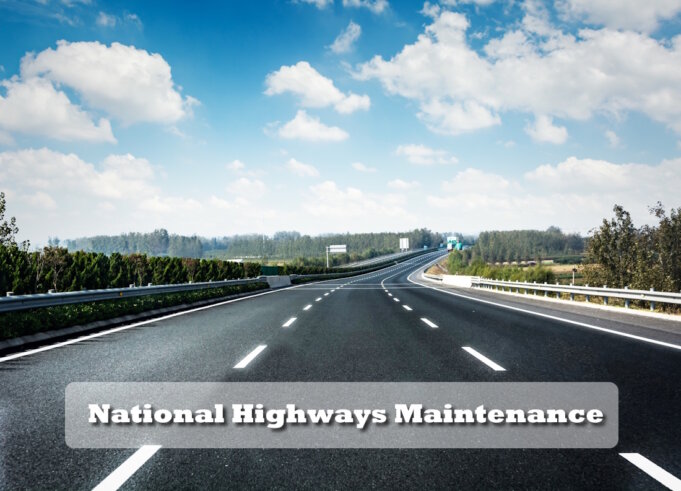The Government of India has accorded high priority to the upkeep and maintenance of the existing National Highway (NH) network. To ensure consistent and accountable execution of Maintenance and Repair (M&R) activities, a structured mechanism has been established, assigning responsibilities to designated maintenance agencies.
For NH stretches under development, or those awarded under Operation, Maintenance and Transfer (OMT) or Operation and Maintenance (O&M) contracts, the responsibility for M&R lies with the respective concessionaires or contractors. This obligation continues until the conclusion of either the Defect Liability Period (DLP) or the concession term. Similarly, in the case of NH stretches operated under Toll Operate and Transfer (TOT) arrangements or through Infrastructure Investment Trusts (InvITs), the maintenance responsibility remains with the concessionaire until the end of the concession agreement.
For all other NH sections not covered under the above frameworks, the Government has adopted a policy of undertaking maintenance through either Performance-Based Maintenance Contracts (PBMC) or Short-Term Maintenance Contracts (STMC), ensuring focused and measurable outcomes.
To improve traffic regulation and enhance safety, the Government periodically revises the Motor Vehicles Act. According to the Motor Vehicles (Amendment) Act, 2019, detailed rules for the Electronic Monitoring and Enforcement of Road Safety were notified in August 2021. These rules apply to high-risk and high-traffic corridors on National and State Highways, as well as at critical intersections in cities with populations exceeding one million, including those designated under the National Clean Air Programme (NCAP). Enforcement responsibilities under these rules rest with the respective State and Union Territory Governments.
Further, the Government has initiated the deployment of the Advanced Traffic Management System (ATMS) on National Highways that are four lanes or wider. This system integrates electronic enforcement technologies to enable real-time monitoring, prompt detection of traffic incidents and violations, and efficient management of road safety and emergency response measures.
Development activities on NHs, including those in hilly and remote regions, are typically designed to meet all-weather operational standards. Projects are prioritized based on traffic volume, road conditions, and strategic alignment with the PM Gati Shakti National Master Plan (NMP). Currently, 1,310 National Highway projects are under construction, covering a total length of 31,187 km and involving an investment of approximately Rs 8.11 lakh crore.
To facilitate uninterrupted and safe travel in remote and mountainous terrains, the Government is implementing weather and landslide alert systems and constructing tunnels and viaducts in high-altitude zones. These measures aim to ensure smooth vehicular movement and connectivity under challenging conditions.
Additionally, standardized guidelines have been issued for assessing hill slope stability and recommending appropriate, cost-effective, long-term stabilization techniques for landslide-prone areas. In alignment with sustainable development practices, the Government is also implementing bio-engineering interventions such as hydroseeding using coir and jute mats, installation of chain mesh with vegetation strips, bamboo-based terracing, and Vetiver grass plantations on jute substrates. These methods contribute to stabilizing vulnerable slopes, thereby improving road safety in geologically sensitive areas. Where such mitigation approaches are technically unviable, tunnel construction is considered as an alternative to ensure reliable and safe road connectivity.
Cover photo: www.freepik.com











